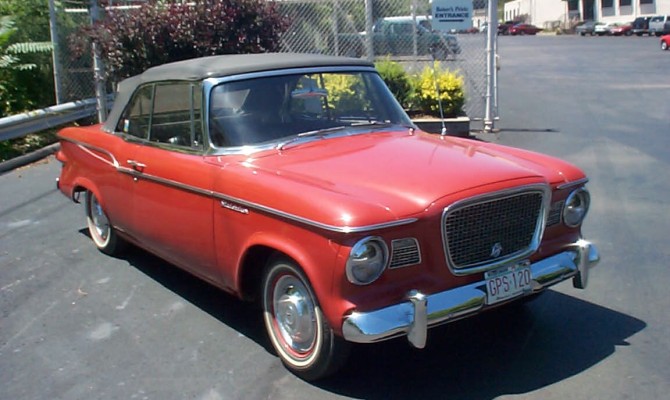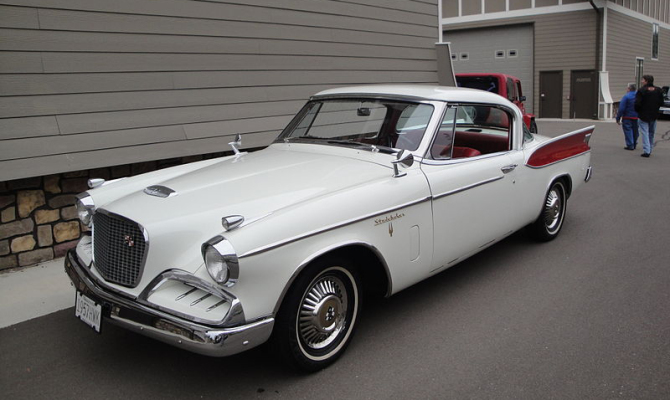by Leon Rochocco, Jr.
“Sex Sells” has long been a popular tenet in advertising.
And sex appeal has typically made it easier to sell cars. The movie industry has always favoured convertibles for their leading men and women, whether Carey Grant, Sophia Loren, Grace Kelly, Kevin Costner or Susan Sarandon.
Virtually any car becomes sexy when you chop the top, but I did say virtually. These five cars resist the glamour and glitz that often come with convertibles.
1985-1987 AMC Alliance Convertible
Built in the United States using a 1.7-litre engine and transmission from Renault, the Alliance was very much French in feeling. It was small, mundane in appearance and less than competitive against the best from Volkswagen, Toyota and Honda. It wasn’t cool with a roof and it didn’t get cooler without one.
A good measure of its appeal then is its collectability and desirability now, which is nil.
1989 Yugo Cabriolet
The formula for the Yugo was simple and it was laughable. Buy a 20-year-old-design of a highly rust-prone Italian economy car, barely update it and ship it to America by the thousands. At first, people will buy a product that is vastly cheaper than the competition, but once the public finds out that it is slow, unattractive, outdated, uncomfortable and minimally reliable, the charm leaves in a hurry.
Did a convertible version help the image and dramatically boost the sales?
Again, the answer was “Not really” – a response that was reinforced by a price that was double the cost of the GV Plus hatchback, which had gained fuel injection and six horsepower.
1960-1963 Studebaker Lark VI Convertible
Solid, sensible and reliable all summed up Studebaker’s Lark. It was a good car without flash or panache, which had limited appeal to car-mad teens.
There’s no question that lowering the top on the Lark made for a pleasant experience, but it didn’t change the status of this car from dud to stud when it came to sex appeal.
1908-1927 Model T Ford
Ford’s Tin Lizzie has always been rugged, reliable and in a class of its own. But sexy? Not likely.
The roadster or touring car versions may be fun, simply because fun goes with open-air motoring like peanut butter goes with jelly. Sex appeal, though, simply isn’t part of the equation with this American icon, though the story would be very different if we were talking about a 1940 Ford Convertible Coupe.
1961-1963 Rambler American
The Rambler had to be one of the most sensible cars built in North America: properly engineered to conservative standards, with incredibly reliable straight-six engines and pricing within reach of middle class budgets. For 1961, the line offered a convertible and it was a lot like its sibling – responsible, sturdy and dull.
In appearance and performance, the new drop-top was essentially an open-air version of an orthopedic shoe. You know, the kind of show that Marilyn Monroe or Angelina Jolie would avoid like the plague. Even spraying pheromones on this car wouldn’t give it an ounce of sex appeal.
Leon Rochocco, Jr. writes for Hagerty Insurance. Hagerty is the world’s leading specialist provider of classic car and boat insurance. Learn more at hagerty.ca.
“Post-war cars that swam against the stream of fins, scoops, chrome and decals and were memorable for their elegant simplicity…”
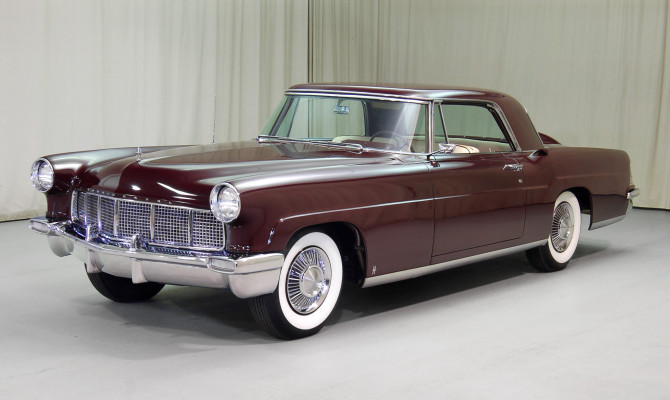

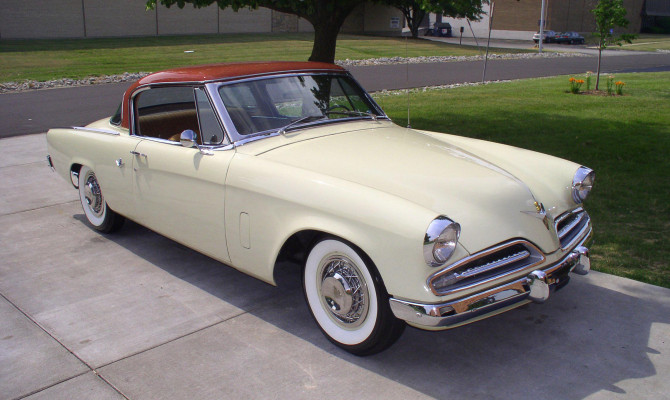
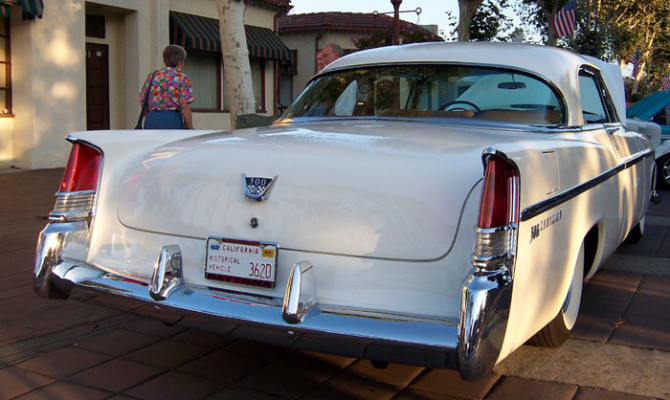

Poet Henry Wadsworth Longfellow famously wrote, “In character, in manner, in style, in all the things, the supreme excellence is simplicity.”
And one could argue that the same is true in automotive design. American car design of the 1950s-1970s was beloved for its flamboyance; here are the best from that bunch of years…
1963-65 Buick Riviera
The 1963 Riviera was the result of GM design head Bill Mitchell’s desire to produce something that was a combination of a Rolls-Royce and a Ferrari. Whether he succeeded in that odd mash-up is debatable, but the 1963-65 Riv was a thing of great elegance and simplicity, particularly the 1965 model with hidden headlamps.
Introduced at the height of Camelot, it was as elegant as Jackie Kennedy.
1956-57 Continental Mk II
The Continental was emphatically not a Lincoln, even though it shared the name of numerous products of that division of the Ford Motor Company. For two brief years, Continental was a division unto itself and the Mk II may well have been the most elegant post-war car built in America. Costing the then-unheard-of sum of $10,000 (the equivalent of almost $87,000 in today’s money), the care and craftsmanship that went into each car ensured that Ford still lost money on each one.
Elvis, Frank Sinatra and Elizabeth Taylor were all Continental owners.
1953 Studebaker Regal Starlight coupe
Famous industrial designer Raymond Loewy put together a team of talented designers that included Robert Bourke to design a car like no other of the 1950s. Low, sleek and incredibly elegant, the Regal Starlight is largely forgotten today by all but the most diehard car collectors and fans of the long-defunct Studebaker Corporation of South Bend, Indiana.
1975-79 Cadillac Seville
In a decade not necessarily known for elegance (heaven knows how many high school kids rode to prom in dad’s Seville wearing powder blue polyester tuxedos), the Seville stood out against the odds as a particularly elegant design. Not only was it handicapped by being a product of the 1970s, but it was the first time that a substantial number of Chevrolet components were used in a Cadillac (it shared the same underpinnings as the Nova). But this was no Cimarron. The first-generation Seville was elegant, restrained and every bit a Cadillac. Although it was the smallest car in the lineup, it was the most expensive and it looked the part.
1956 Chrysler 300B
The first of the 300 “letter-series” (the 1955 C-300 was never actually called the “300A”), it was probably the prettiest Mopar design of the 1950s. Its pillarless hardtop design and restrained use of chrome were wildly inconsistent with the over-the-top performance that the car was capable of delivering from its 355-hp, 354-cubic-inch Hemi V-8. It terrorized NASCAR back in the day.
Rob Sass is the vice-president of content for Hagerty Insurance. Hagerty is the world’s leading specialist provider of classic car and boat insurance. Learn more at hagerty.ca
The classic car world is possibly one of the most opinionated collecting pursuits known to man, and nearly everyone seems to have an opinion on relative values and desirability.
Each car on the list has at one time or another been deemed by “experts” to be hopeless as a collectible and each has one thing in common – they’ve skyrocketed in value.
1956-58 Studebaker Golden Hawk
Poor Studebaker, the cars of the ill-fated favorite son of South Bend, Ind., never seemed to get the same love from collectors as the cars of the Big Three. But they may be getting the last laugh. (more…)
Some people will come to blows over the merits of the 1980-85 Seville…
The old saying “beauty is in the eye of the beholder” wasn’t coined in reference to cars, but it might as well have been.
Some cars, such as the 1963-67 Corvette Sting Ray and Jaguar E-Type, are almost universally admired, while others are passionately loved by some and loathed by others. Here are five of the most polarizing:
1. 1963-64 Studebaker Avanti
The Avanti was a Hail Mary play to save the ailing Studebaker Corporation with a stunning European-style GT car. Ardent Avanti fans point to its timeless styling, which was supervised by the great Raymond Loewy, and the fact that the car remained in production in one form or another for five decades. Non-fans find the grille-less front end and porthole-like headlights to be a non-starter. A recent uptick in prices may indicate that Avanti lovers will have the last laugh on this one.
2. 1971-73 Buick Riviera
The Boattail Riviera was one of the last truly audacious GM creations, and William Mitchell pulled out all of the stops with a huge, dramatic design including a pointed boattail reminiscent of some great 1930s cars. Haters just find it huge and over-the-top.
3. 1980-85 Cadillac Seville
The slant back or bustle trunk Seville was —like the Boattail Riviera — in some ways a throwback to the 1930s-1950s, cribbing a trunk from Bentleys and Daimlers of the era. Some people will come to blows over the merits of this version of the 1980-85 Seville, while some find it to be a caricature; it’s best if these two groups aren’t sharing the same air space. Regardless, nobody sits on the fence about this car.
4. 1965-69 Chevrolet Corvair
The first-generation Corvair, introduced in 1959, was a pleasing and clean design. But the second-generation was drop-dead gorgeous. No less an authority than David E. Davis, Jr., writing for Car and Driver, called it one of the most beautiful cars America had produced during the post-war era. But many bow-tie fans — used to fins and lots of chrome or the long hood, short rear deck look of the Camaro and Chevelle — found nothing to like about the Corvair. I tend to agree with the fans here. It’s a beautiful little car.
5. 1955-75 Citroën DS
In its native France, the DS can do no wrong. The letters “D-S” in French sound remarkably like the French word for “goddess.” Then the French also think that Jerry Lewis is a god. To most Americans, the sci-fi style of the DS just comes off as whale-like and weird.
Rob Sass is the vice-president of content for Hagerty Insurance. Hagerty is the world’s leading specialist provider of classic car and boat insurance. Learn more at hagerty.ca and you can email rsass [at] hagerty [dot] com
Recent Comments
- { Enjoyed your Forest of Bowland in the BMW X5M, particularly the photo of the BMW in front of the main part of Stonyhurst College where... }
- { Bantam designed the Jeep, not Willy's or Ford. The American military gave the original Bantam prototype to Willys and Ford to copy. There is plenty... }
- { All Escalades come with a 6.2-lilter V8 engine that produces 420 horsepower. A six-speed automatic is the only transmission offered and drives the rear wheels.... }
- { Alexandra is an excellent journalist. }
Popular Posts
- Journey to a ‘Sparkling’ Luxury Okanagan Resort “Four lucky readers will put a Dodge Journey’s weekend-...
- The Need For Speed: Hike Those Highway Limits More than half of those polled believe the province sho...
- Drives-U-Crazy… Erratic drivers. An early morning drive from Kelowna to Vancouver is nor...
- Readers Respond: The Pros and Cons of Increasing B.C. Speed Limits Increasing the speed limits will only increase risk to...
- Honda CR-V Review: The Compact Crossover To Get Things Done The CRV is a very stylish and aerodynamic crossover veh...






